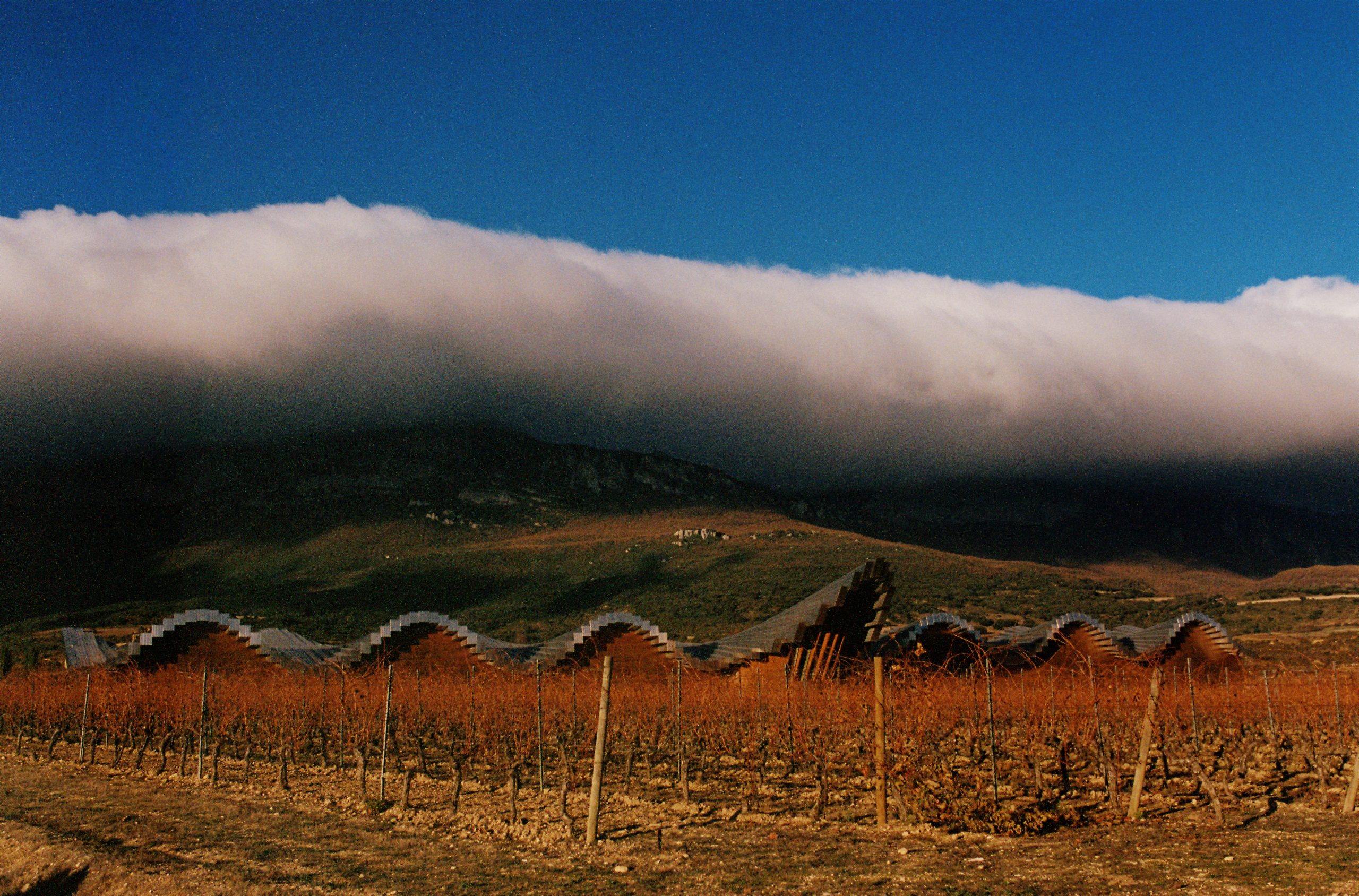10 of the world’s most exciting new distilleries
In spite of the challenges of covid, the past two years has seen a slew of distilleries open, as well as plans submitted for ambitious new multi-million developments. What they all have in common is a desire to stand out, whether that’s through their location, approach to sustainability and production, or simply stunning architecture.
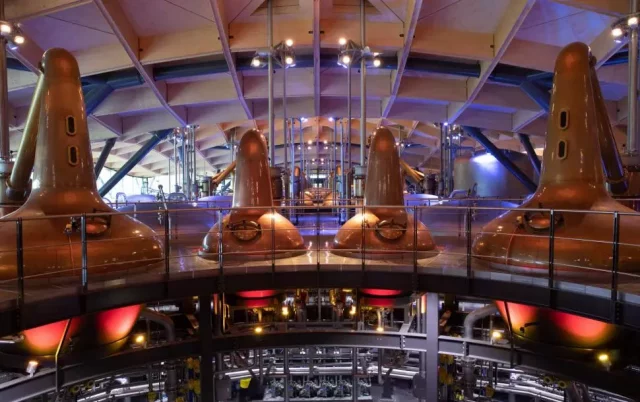
It’s no longer enough to build a functioning distillery with the ability to produce a spirit. Today, distillery owners are pushing the limits of design to create buildings with a more meaningful, dual purpose.
More and more, star architects are being called upon to create unique buildings intended to stand as lasting monuments to a brand, as well as must-visit tourist destinations, resulting in some of the world’s most stunning distillery designs.
The Macallan’s £140m space-age distillery, which opened in 2018 and was designed by esteemed architecture firm Rogers Stirk Harbour + Partners, was one of the early forerunners of this trend, as we watched distilleries morph from functioning buildings into tourist attractions. There are increasingly few distilleries worldwide that don’t offer a distillery tour or some form of hospitality.
Some distillery owners are leaning into sustainability initiatives to create buildings that blend into the landscape with the aim of leaving little to no trace of their impact on the environment, which should be the aim of all businesses.
While others are simply pioneers in their field, opening distilleries that are the first of their kind in their respective countries, offering a new perspective on production and maturation.
The number of distilleries opening and in progress is vast and ever changing. But we’ve rounded up a few of the most interesting projects, some recently completed, others still in the design phase or under construction, but all with plenty of wow factor.
Scapegrace, Central Otago, New Zealand
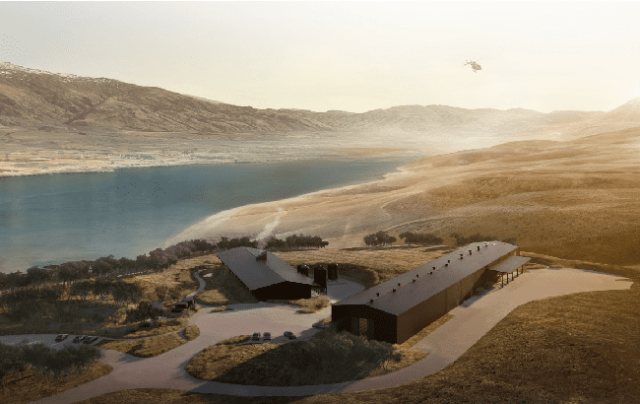
A hugely exciting distillery project, this year the Scapegrace Distillery Co. announced plans for a new £13m (US$16.3m) distillery in the breathtakingly beautiful country of New Zealand. The new distillery will be built in Central Otago, New Zealand, on the South Island. Set in stunning surroundings, the distillery will be located within an 88 acre plot on Lake Dunstan and will become New Zealand’s largest distillery.
The plan is for it to be carbon neutral and capable of producing all of Scapegrace’s portfolio of gins, vodka and upcoming New Zealand whisky, Scapegrace Single Malt Whisky. It will be powered by electrode boilers while the building itself will be constructed from timber rather than steel, a more sustainable material. A regenerative planting programme will also see NZD$150,000 (US$97,665) worth of native Kanuka trees replanted on the site.
The first phase of construction has begun and is due to complete in August 2022. The distillery itself is set to open in October 2023, with three barrel rooms able to hold 2,000 casks each also planned over the coming years. There’s also plans for a walking track throughout the property to allow visitors to explore the site, which features remnants of historic gold mines, as well as hospitality outlets throughout and distillery tours.
Portintruan Distillery, (Elixir Distillers), Islay, Scotland
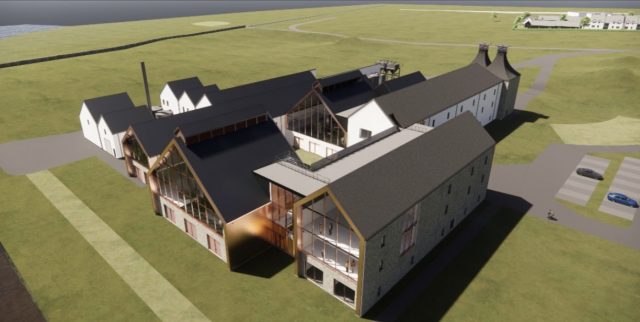
A brand new distillery from Elixir Distillers is currently under construction on Islay, one that aims to combine old-style production techniques with modern technology, with sustainability at its heart. The Portintruan (Port-nah-truan) Distillery, located just outside the town of Port Ellen on Islay’s south coast, takes its name from the historic farm estate where the distillery is located and means ‘place of the stream’.
Plans for the distillery include 14 houses for Islay families working at the distillery, a visitor’s centre, a bar and restaurant and tasting room overlooking the sea, and an educational facility to support the next generation of distillers. There’s also plans for an experimental distillery on site that will allow it to produce not only whisky, but also rum.
Co-owner Sukhinder Singh said: “Elixir Distillers has always taken a flavour-led approach and this will be the Portintruan philosophy as well. We will be utilising a number of old-style production techniques which we believe will accentuate the depth and character of the spirit.”
Construction began in late 2021, with distilling set to start from early 2024.
Isle of Barra Distillery, Scotland
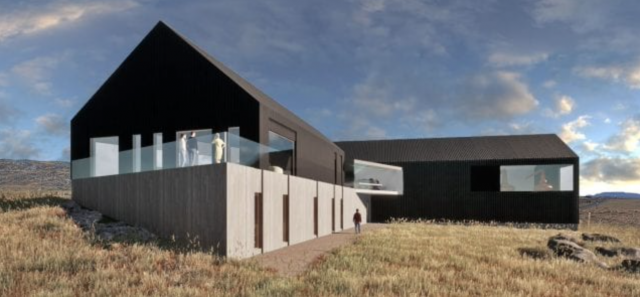
Last year Isle of Barra Distillers unveiled plans to build a new whisky and gin distillery, including a visitor centre, on the Isle of Barra, in addition to a gin distillery that it opened on the island in 2019. The £6 million distillery will be located in Eoligarry in north Barra, and house a one-tonne single malt installation including its 300 litre gin still “Ada”, as well as bottling facilities and bonded warehousing.
Currently Barra Distillers is known for its production of gin. The completion of this distillery will allow the team to expand their portfolio to whisky for the first time, which is particularly fitting for the Isle of Barra.
“For as long as we can remember and certainly since we launched Isle of Barra Distillers, we’ve consistently been asked if we produce whisky because of the name ‘Barra’ and the instant connection people make with Whisky Galore,” said managing director Michael Morrison. “The famous novel written by Compton Mackenzie while staying on the Isle of Barra, and the subsequent film followed. A key point to why we feel this distillery will be a success is the vital aspect that we have had a product already on the market for three years, our award-winning Barra Atlantic Gin.”
Whisky Galore! followed an incident in 1941 when a cargo ship – SS Politician – carrying 22,000 cases of malt whisky, ran aground off the neighbouring island of Eriskay.
When complete the new distillery will be capable of producing over 500,000 bottles of single malt, and will also include a visitor centre with space for retail, an information centre and café/bar area.
Work was due to start in the spring of 2022, with doors set to open in early 2024.
Ardgowan Distillery, Glasgow, Scotland
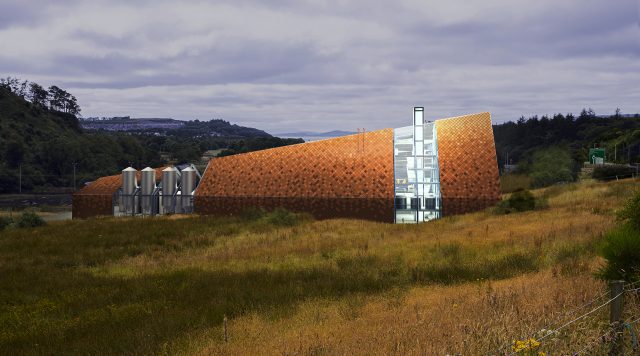
After numerous setbacks and delays due to both Brexit and Covid, new plans for a multi-million Ardgowan Distillery on the Ardgowan Estate near Inverkip, west of Glasgow are now close to fruition. This is a passion project for those involved, who are seeking to restore a distillery to the site after the former Ardgowan Distillery burned down in the Greenock Blitz in May 1941.
The project has been backed by Austrian investor Roland Grain, who has provided a £7.2m to fund the project, with additional investment from Distil Plc, managed by its founders, Martin McAdam and Alan Baker. Grain has a history of investment in the spirits industry, having backed the Cotswolds Distillery, Australian firm Manly Spirits, East London Liquor Company and Potstill Spirits Trading. He also holds a 20% stake in UK-based spirits producer Distil.
“My passion for whisky began as a teenager in Austria when I began to collect Scotch whisky and my wish is for this project to create the highest possible quality whisky and a lasting connection to the community in Inverclyde,” said Grain.
While planning was first submitted in 2016 and approved in 2019, in late 2021 the company unveiled new plans that superseded the previous design. The new design incorporates a Nordic long hall design that will include a ‘sky platform’ with views of the Clyde and a ‘Cathedral of whisky’ visitor experience, designed by Austrian architects Spitzbart and Partners.
It’s hoped that construction will start later this year, with the site expected to be operational by 2023.
Three Societies Distillery, South Korea
Partner Content
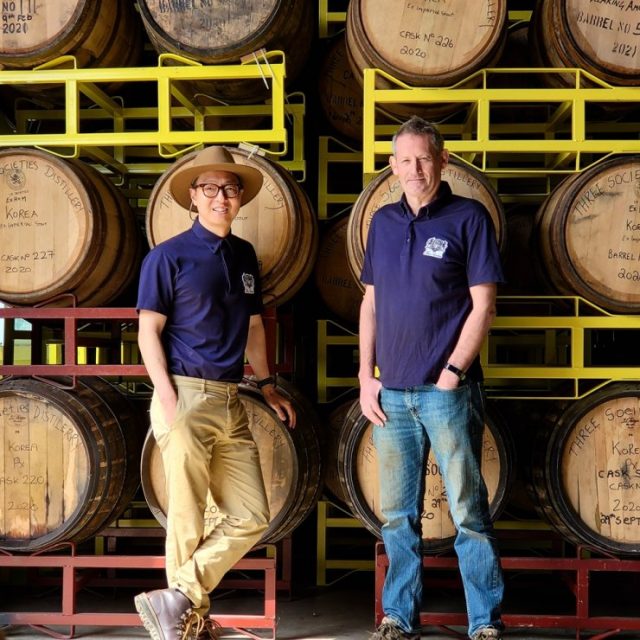
South Korea’s first single malt distillery opened in 2020 in Namyangju, just outside of Seoul in the Gyeonggi Province. Its name derives from the “three societies” that make up its distillery team, Scottish Master Distiller and blender Andrew Shand, Korean-American founder Bryan Do, and the Korean workers that “make our company function”.
The team imports malt from the UK to produce its whisky and barrels from Kentucky, as well as ex-Oloroso and PX Sherry casks from Europe, with plans to experiment with other woods from around the world in the future.
In 2021, the team released its first bottle of single malt whisky, Ki One, and the first for South Korea, making them pioneers in their field. Not only that, but South Korea experiences some of the most wild temperature variations, making it one one of the most temperately unstable, but interesting, places in the world to produce malt whisky. Temperatures can reach as high as 104 degrees Fahrenheit and as low as -4 degrees.
While the distillery itself is more practical in its functionality, without the bells and whistles of some others included in this list, it is truly pioneering in its approach, producing whisky in an as yet completely untapped region – the results of which should prove interesting.
Chuan Malt Distillery, China (Pernod Ricard)
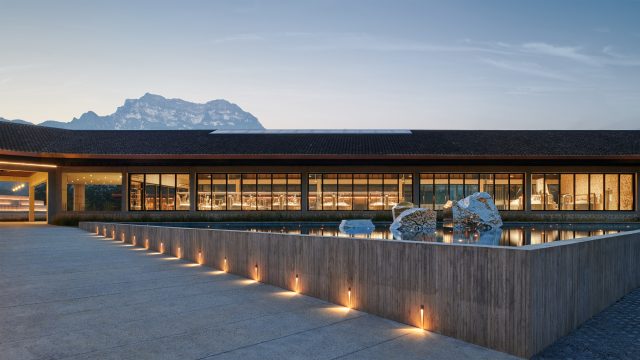
A first for China, last year Pernod Ricard unveiled its new US$150m stone-clad distillery in Emeishan in China’s Sichuan province, designed by award-winning Chinese architectural firm Neri&Hu.
The gargantuan Chuan Malt Whisky Distillery hopes to become a “world-class destination for whisky, arts and culture” attracting some two million tourists in its first decade, and is China’s first malt whisky distillery.. The distillery’s design takes notes from the Chinese concept of dichotomy of two elements, with its architecture inspired by the “winding creeks around the site and majestic Emeishan as the backdrop”. The site will also be home to a permanent art programme, showcasing a rotation of artists.
Philippe Guettat, Chairman and CEO of Pernod Ricard Asia, said: “Our master distiller, Yang Tao, has been working with our heritage master distillers in Scotland to bring the most authentic whisky making know-how into China, while leveraging the pristine water source of Emei, renowned for its utmost quality.”
The distillery uses 100% renewable electricity with minimal use of natural gas, with any remaining emissions offset as part of a Sichuan biogas programme. Much of the materials used to construct the building were taken from the excavation site, while distillation by-products will be processed into animal feed.
Production is already underway, while its visitor centre is set to open in 2023.
Diageo Eryuan Malt Whisky Distillery, China
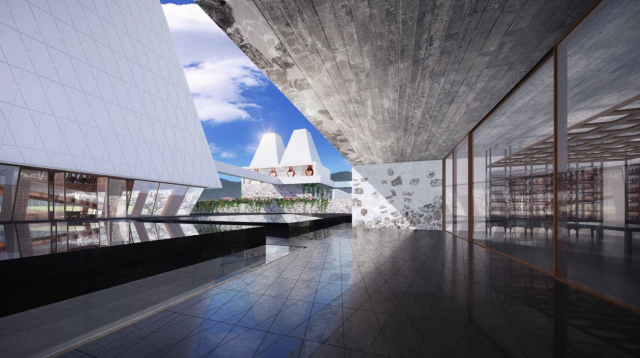
Hot on the heels of Pernod Ricard, Diageo is also planning a malt whisky distillery in China, demonstrating the confidence in the Chinese whisky market. The new US$75m distillery will be based in Eryuan County in Yunnan Province, and will produce Diageo’s first China-origin, single malt whisky. The 66,000 square metre distillery will be carbon neutral and will also include an “immersive and interactive visitor centre” that aims to boost the local tourism industry.
It will sit at 2,100 meters above sea level, with the site selected for its temperate climate, natural biodiversity and access to natural spring water (Erhai Lake, in Yunnan). “The natural surroundings and the Eryuan landscape will allow us to craft a world-class, China-origin, single malt whisky that will capture the imagination of premium whisky lovers in China,” said Sam Fischer, President, Diageo Asia Pacific and Global Travel.
The team broke ground in late 2021 with construction expected to start in 2022.
iLi Distillery, Islay, Scotland
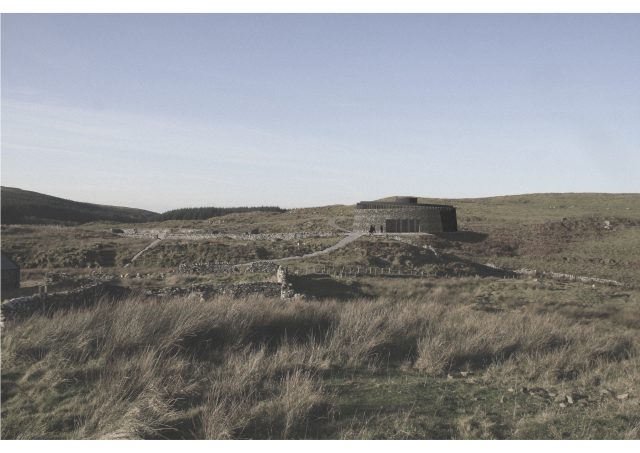 The iLi distillery is a good example of where architects are seeking to go against the grain when it comes to distillery design. Based at Gearach Farm, near Port Charlotte, on Islay, the windswept “drum-like” circular building, designed by Alan Higgs Architects, is intended to deliberately juxtapose against the traditional rectangular, white-walled, shed-type distilleries of Islay.
The iLi distillery is a good example of where architects are seeking to go against the grain when it comes to distillery design. Based at Gearach Farm, near Port Charlotte, on Islay, the windswept “drum-like” circular building, designed by Alan Higgs Architects, is intended to deliberately juxtapose against the traditional rectangular, white-walled, shed-type distilleries of Islay.
The team took inspiration from similarly circular buildings, such as lighthouses, Bowmore Church, duns, brochs and an unusual 1820 steading nearby to come up with the design. The distillery itself is only one storey, and designed to blend into the landscape, and has a particularly understand quality. “The distillery will form a part of Islay’s legacy of whisky production, with a range of important benefits for the local area,” the design team has stated. “It will be highly sustainable from the outset through the inclusion of renewable energy generation on-site, and will represent a long-term and sustainable diversification of the existing farm operation.”
The distillery, which will also include a “visitor experience”, aims to be carbon-neutral, with the men behind the project Bertram Nesselrode, whose family owns the farm, and Scott McLellan, a local farmer.
Completion is set for summer 2023.
Kentucky Owl Bourbon Distillery, Kentucky, US
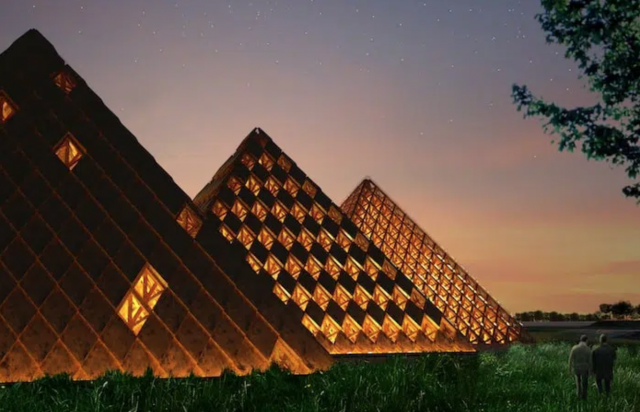
One of the most striking of distillery designs to have emerged from the US is that of Japanese architect Shigeru Ban, who has plans to transform a quarry in Kentucky into a sprawling distillery with a trio of three Pyramid buildings at its heart.
The design is for Stoli-owned Bourbon producer Kentucky Owl, with the centrepiece pyramids made from timber, not steel, with the aim of creating a more sustainable design that blends with natural landscape. The distillery itself will be housed within one of these pyramids. Other buildings will be arranged around the existing quarry pits, which will be turned into huge lakes filled with limestone-filtered water for to use in whiskey production.
The ‘Kentucky Owl Park’ will comprise the distillery, visitor centre, and a bottling centre, in addition to rick houses and a restaurant. There’s also plans for a wooden station that will provide a transport hub for visiting dining carriages that will stop at the property as part of the tourist Kentucky Bourbon Trail.
Groundbreaking took place in 2017 but the $150m project is still ongoing without a clear end date in sight.
Port of Leith Distillery, Edinburgh, Scotland
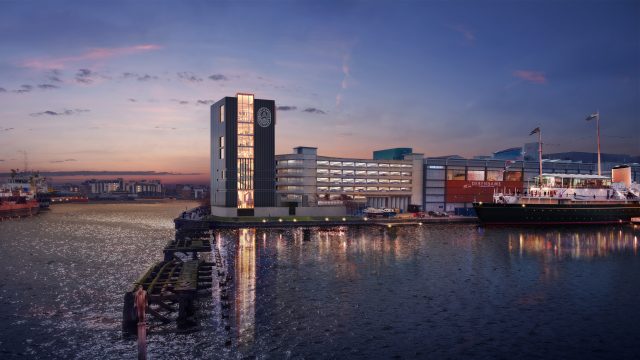
Leith Distillery is one of the most innovative designs on our list, and the most urban. It’s located in the heart of Edinburgh’s Port district of Leith, overlooking the harbour. With space at a premium, its architects didn’t have sprawling fields to expand within. Instead, they looked upward, and are now in the final stages of completing a vertical distillery that uses gravity to support the entire production process. Grain milling and mashing at the top, down through fermentation to distillation at the bottom. The building also includes a lab space for analysis and experimentation for students from Heriot Watt, offices and a number of flexible spaces that can be used for exhibitions and public events.
“Nobody has built anything quite like our building before,” said founder and co-CEO, Ian Stirling. “There’s another vertical distillery in Sweden, but it doesn’t have tasting rooms and a bar on top of it. So we’ve had to overcome very significant design challenges along the way.”
The plan is to produce 400,000l (of pure alcohol) per year, as well as attract tens of thousands of visitors. Planning permission was granted in 2017 and construction began in 2019. With a “fair wind” Stirling hopes to be operational this autumn.
Related news
World cuisine set to boost sales of RTDs
Suntory CEO: Tariff plans prompt broader global investment considerations
Wine and whisky measures fall short in undercover investigation




